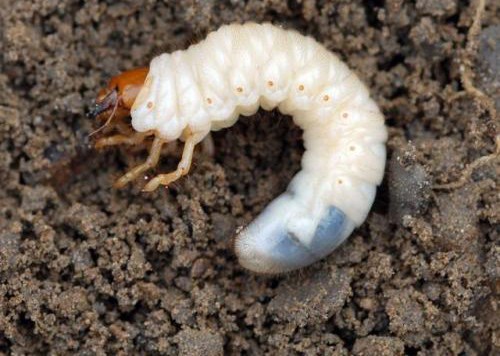I have to talk about it again. Everybody is in a tizzy at this time of year because of the terrible damage to their lawns. Skunks, racoons and crows are enjoying a very tasty feast of grubs brought to you by the European Chafer Beetle.
This destructive insect was introduced to the Lower Mainland in 2001. It has become a very serious pest in our lawns.
Many homeowners have had their grass ripped out and replaced with new turf to have the grubs appear in the new grass again. Some people spread topsoil and reseed hoping to chase these nasty insects away. Back it comes!
Another solution some homeowners are doing is replacing grass with artificial lawn. This is not a good solution as artificial grass is an oil based product which contributes to greenhouses gases which is not good for our planet. Think about what will happen to the plastic grass when it is at the end of its life cycle? Off to our landfills.
Some of our neighbours are spraying with nasty chemicals. These chemicals affect our pollinators and beneficial insects. There is a decline in the pollinator population due to chemicals in our environment. Pollinators are key to our food production. This is not a good choice at all, sacrificing pollinator insects for a green lawn!
I am helping out our neighbours with their lawn that has been damaged badly by the grubs of the chafer beetle. The beetles lay their eggs in lawns in most cases where there is a poor root system. Infested lawns may feel spongy due to the grubs making their way up to the surface. The grass will be wilted or dead and is easy to pull back.
My neighbours decided to remove a section of their damaged lawn and convert it into a garden bed. My hand went up to volunteer.
I am removing sections of the turf and removing the chafer grubs by hand. Crows are sitting in the trees around me yelling at me to get out of the way so they can enjoy a snack of juicy grubs. It is a long, labour-intensive task but worth the effort. Many of our neighbours are stopping by to take a look at my bucket of chafer grubs.
Once I have dug up all the damaged grass and created my garden bed, I will mix in an organic soil to amend the current soil and then plant up the garden bed with drought resistant perennial plants and shrubs.
Another of our neighbours went through the same process on their damaged lawn last year. The turf was removed, the soil dug up about a foot deep, chafer grubs were removed by hand and then new soil was added. A chafer resistant blend of grass seed was spread which contains a type of fescue and micro clover that the chafer beetle does not like. The most important step in this method is to water the newly seeded grass deeply every day to make sure deep roots are established. Our neighbours lawn is green and lush this year with no signs of chafer damage. We will continue to monitor their lawn for any signs of chafer damage.
If you are lucky and have not been affected by the chafer beetle, make sure to not cut your grass too short. Longer grass blades means a longer root system which is more resilient to the chafer beetle. Leave your grass clippings in the lawn which will naturally act as a fertilizer. Overseed your lawn right now to contribute to a lush and dense lawn. This is also a great time to add lime to your lawn. Lime counteracts the soil’s natural acidity which prevents grass from taking up key nutrients it needs for optimal growth.
Check out the City of Richmond’s website (www.richmond.ca) for more information about dealing with this prolific pest.
As a final note, I beg you not to use any chemicals. There are no insecticides allowed to be used under the City of Richmond’s Pesticide Use Control Bylaw No. 8514. Laws aside, chemicals are destroying our bees, butterflies and other beneficial insects that contribute to our food production. I also beg you not to install artificial grass. It can increase temperatures and can affect storm water runoff which can carry debris into our storm sewers causing water pollution. Parts of artificial grass is often made from recycled tires. Artificial grass does not appear to be a healthy solution for the homeowner nor the environment.
Lynda Pasacreta is the current president of the Richmond Garden Club. For more information visit richmondgardenclub.ca.



